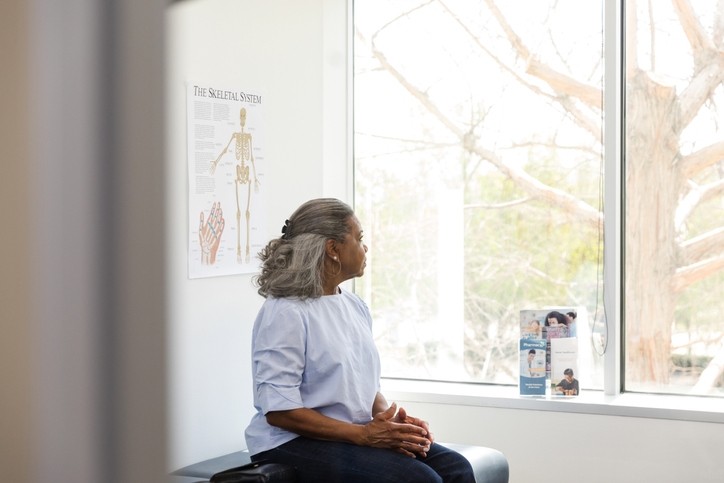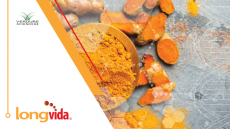Study: Vitamin D deficiency 'remains alarmingly high' in seniors

The study assessed serum Vitamin D (Vit D) concentration status in 240 patients aged 70 and above within the Department of Geriatrics, Medical University of Bialystok, Poland, exploring associations with age, sex, BMI and Vit D supplementation.
“Despite recommendations for Vit D supplementation having been in place for over a decade, the percentage of seniors admitted to the Department of Geriatrics with Vit D deficiency and inadequacy remains alarmingly high," the Polish researchers wrote in the journal Nutrients. “This emphasises the urgent need for further actions to address this concerning trend.”
The need for Vit D
Vit D plays a crucial role in physiological processes, particularly in maintaining the skeletal system through its influence on calcium-phosphate metabolism.
Deficiency in older adults is linked to various musculoskeletal disorders, and previous studies suggest that maintaining optimal Vit D levels, along with physical activity and proper nutrition, may reduce the risk of related diseases, positively impacting the overall quality of life.
Low Vit D levels are associated with cardiovascular diseases, compromised immunity, depression and neurodegenerative disorders. In addition, some studies have shown that maintaining an appropriate Vit D level reduces the risk of developing certain cancers.
Vit D regulates calcium and phosphate metabolism, influencing bone metabolism, promoting bone mineralization by osteoblasts, and increasing the absorption of calcium and phosphates in the intestine. It exerts effects by activating the membrane receptor (MARRS, membrane-associated, rapid response steroid-binding) and Vit D receptors (VDR) present in the nuclei of most cells. These transcription factors regulate the expression of over 2,000 genes responsible for cell differentiation, proliferation and apoptosis.
In human plasma, Vit D is present in the forms of cholecalciferol (Vit D3), formed in the skin from 7-dehydrocholesterol under the influence of UV-B rays, or ergocalciferol (Vit D2), obtained as a component of plant-based foods. In the absence of sufficient biosynthesis in the skin, which is common among older populations, dietary intake and supplementation become a critical source of Vit D.
For younger seniors (65–75 years), due to decreased efficacy of the skin synthesis, a dose of 1,000–2,000 IU/day (25–50 µg/day) is recommended throughout the year. In older seniors (>75–89 years) and the oldest individuals (90 years and older), this recommendation jumps to 2,000–4,000 IU/day (50–100 µg/day).
Despite recommendations and global awareness, Vit D deficiency remains a challenge, especially among vulnerable groups. Between 40% and 80% of the older population struggle with Vit D deficiency, and high percentages of inadequate Vit D levels among seniors are found regardless of gender, skin colour or place of residence.
A study conducted in Poland from 2016 to 2020 showed that Vit D deficiency (25(OH)D concentration <20 ng/mL) was present in half of the participants over the age of 60, with the authors calling for Vit D supplementation when establishing the fundamental canon of public health activities for seniors in Poland.
“The research did not include the elderly living in care institutions or those who are hospitalised, more disabled or diseased," the authors of the new study noted.
“Therefore, our study aims to assess Vit D concentrations in older patients admitted to a geriatric ward and to evaluate the adherence to existing recommendations and preventive actions in this particular setting (whether they translate into health-promoting behaviours (i.e., taking vitamin D supplements) and whether the recommended, optimal 25 (OH) D concentration values are achieved.”
Study details
The study participants included 177 women and 63 men, 193 of whom were over the age of 75. Each patient underwent a comprehensive geriatric assessment, which included a detailed medical history, physical examination and laboratory tests. Nutritional status considered socio-demographic data, anthropometric parameters and Vit D concentration.
The researchers reported a median 25(OH)D concentration of 22.95 (IQR, 13.7–33.0) ng/mL, with a ‘profound deficiency’ (<10 ng/mL) in 15% of participants and inadequacy (<30 ng/mL) in 67.5% of participants.
Only 18.3% of individuals took Vit D supplements pre-admission, and insufficiency was more prevalent in non-supplemented individuals (70.9% vs. 52.3%) and those with a BMI ≥30 kg/m2 (76.2% vs. 59.2%). A logistic regression model showed that obese patients had over two times higher odds of Vit D inadequacy, as did non-supplemented individuals.
The high prevalence of Vit D deficiency and inadequacy in geriatric ward admissions highlights the urgent need for targeted interventions and enhanced education for older adults, caregivers and physicians to improve adherence to preventive supplementation practices, the researchers concluded.
“Research on available Vit D supplements in the market is crucial, considering that only select preparations in Poland hold 'drug' status and meet quality standards,” they added.
Journal: Nutrients
doi: doi.org/10.3390/nu16020193
“Vitamin D Status among Patients Admitted to a Geriatric Ward—Are Recommendations for Preventing Its Deficiency Effective Enough?”
Authors: Maksymilian Adam Lech et al.













